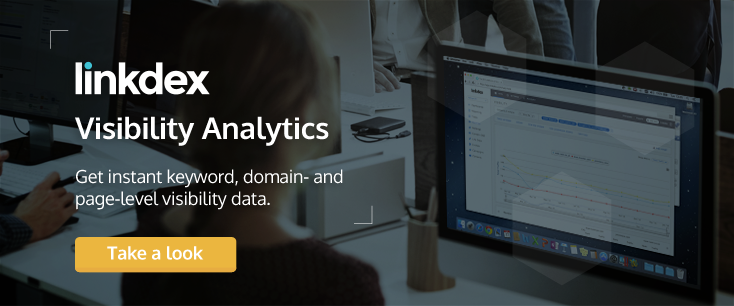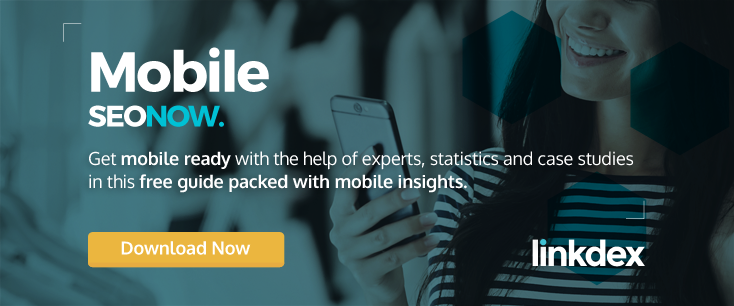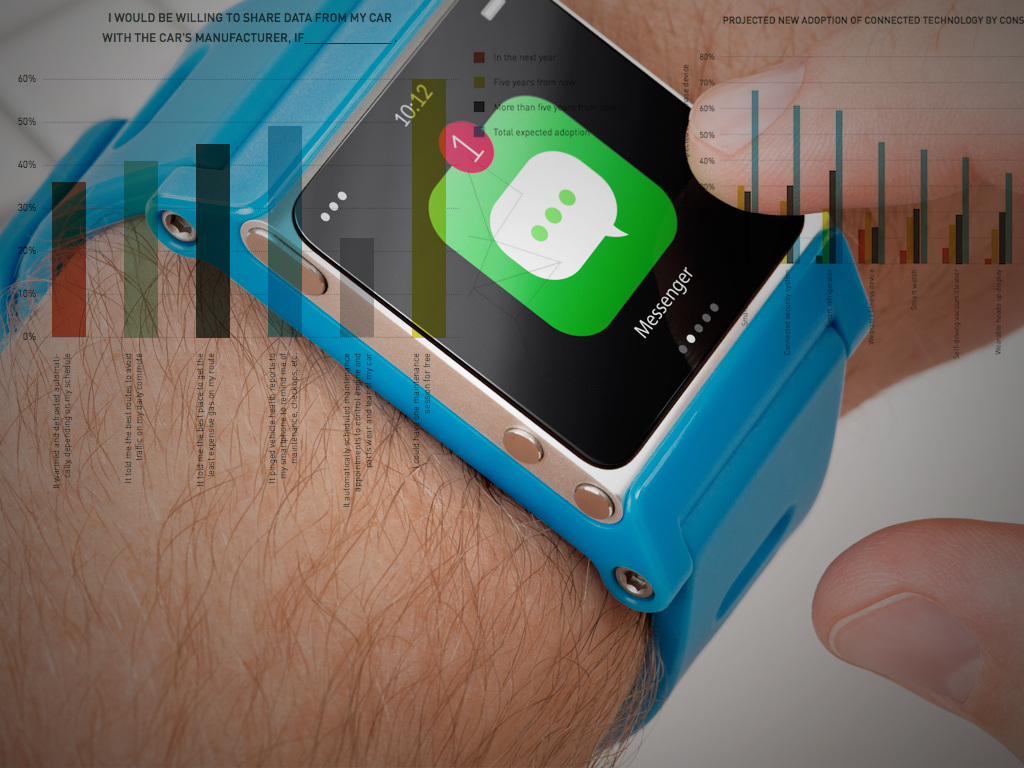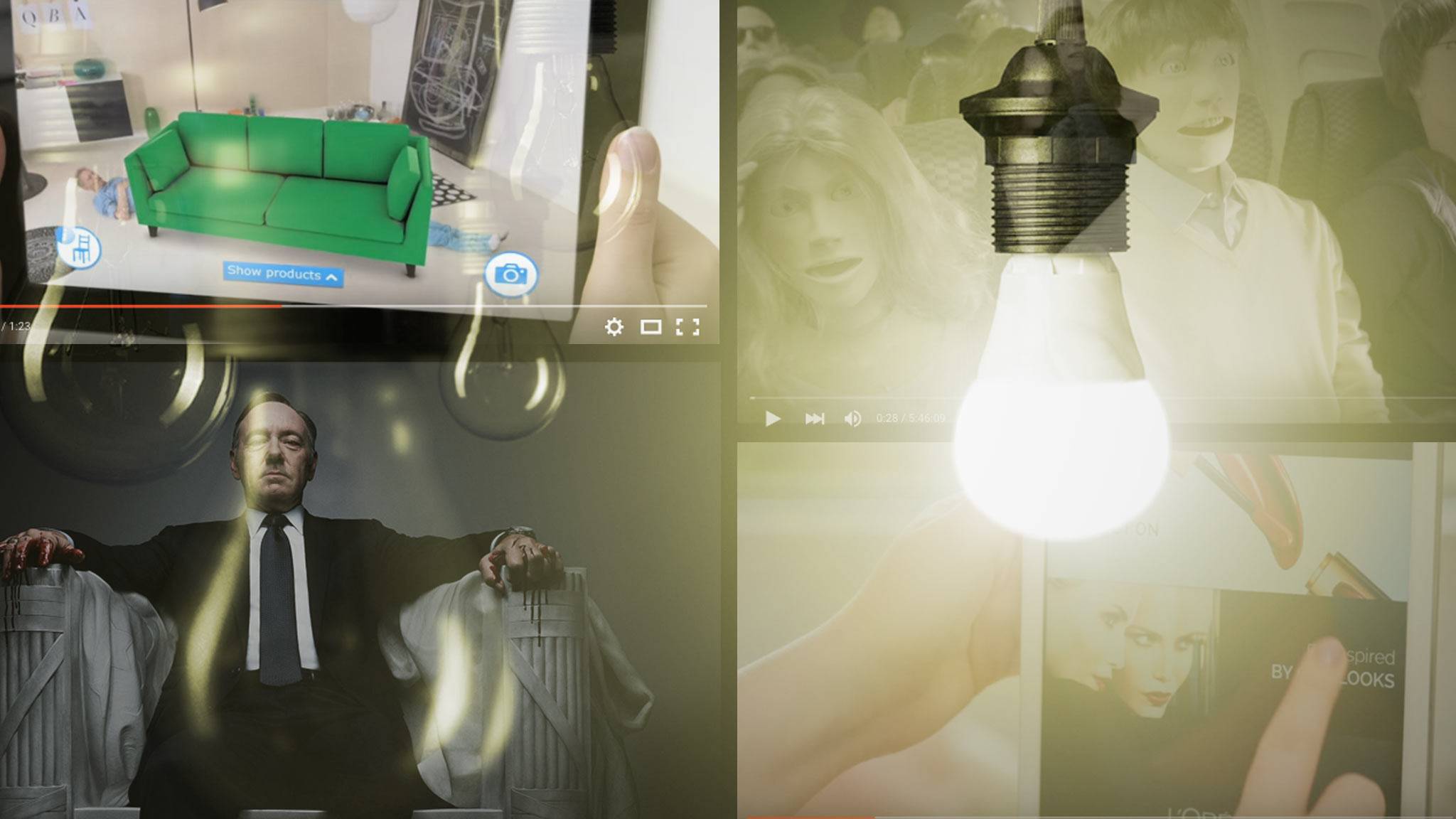Increased adoption of smart technology in venues like highways, cities, and theme parks doesn’t just generate data, moments, and experiences – it also has profound implications for marketers.
Look no further than brands like Kodak, Blockbuster, Walkman, Borders, and Blackberry. These brands are just five examples of titans of industry that failed to adapt as new technology was introduced and/or as consumer preferences changed, said Travis Sabin, product manager for mobile app analytics at Adobe, who spoke recently at Adobe Summit. Brands that want to avoid similar fates need to adapt to new technology – like the Internet of Things, or IoT – to avoid disruption.

The Only Constant…
But this is perhaps easier said than done as the only constant is change in technology. In fact, one-time state-of-the-art wearables like Apple Watch, Fitbit and Nike FuelBand are becoming increasingly common, along with the smart thermostat Nest and Amazon’s voice command device Echo, as well as devices like Progressive’s Snapshot, which monitors drivers’ behavior for potential discounts, and digital media player Apple TV. In fact, technophiles can take advantage of a market that now includes:
- Smart baby monitors like Mimo, which send information about babies’ breathing, sleeping temperature, body position and activity to caregivers’ smartphones.
- Smart doorbell cameras from Vivint, which show approaching visitors day or night on users’ smartphones.
- Smart locks from Kwikset, which are paired with users’ phones to open and lock doors – even remotely.
- Smart plugs from the likes of Zuli, which allow users to set preferences for lighting and temperature, which are adjusted when users enter or leave a room, in addition to allowing them to control connected lights and appliances from an app and to monitor energy consumption.
But it’s not just whiz-bang stuff that makes our lives easier. The IoT is a force to be reckoned with that will disrupt every sector – if those sectors have not been impacted already, Sabin said.
The IoT Market
The IoT is a network of connected devices that can be monitored and controlled remotely, but it’s also the consumer experience derived from it, Sabin said. It includes sensors, which are used to collect data and can be very small and placed virtually anywhere; remotes, which typically include smartphones and tablets, but also desktops; servers, which collect data; and analytics that tie everything together, process it, visualize it and help consumers – and marketers — glean insight. Some projections say there will be 23.3 billion IoT devices by 2019, which is twice as many tablets, smartphones and PCs today combined. In addition, Sabin said $1.7 trillion will be added to the global economy from IoT, with $50 billion coming directly from devices. Further, IoT is growing thanks in part to factors like expanded Internet connectivity, high adoption rates of remotes and the declining costs of sensors, as well as myriad benefits, like increased consumer control and enhanced customer experiences, cost savings as a result of alerts about problems before they become large-scale issues and even disaster prevention capabilities like smart cement that can deter bridge collapses. Even though some concerns remain about security, privacy, lack of a common set of standards and high implementation costs, there are some solutions in the works. Further, here are three examples – and benefits – that demonstrate the advantages likely outweigh any remaining drawbacks.
1. Smart Highways
Solar Roadways is a Sand Point, Idaho-based company that produces a modular system of specially engineered solar panels that can be driven upon, which is perhaps most colorfully illustrated in this video.
https://youtube.com/watch?v=qlTA3rnpgzUThe panels contain LED lights to create lines and signage without paint – which make them easy to adjust to accommodate traffic or roadwork – as well as heating elements to prevent snow and ice accumulation. Plus, the panels have microprocessors, which Solar Roadways says makes them intelligent. “This allows the panels to communicate with each other, a central control station and vehicles,” the brand says. Solar Roadways says it is still in the early phases of development. While its panels will eventually be available for highways, non-critical applications like driveways and parking lots will come first. The brand has completed two funding contracts with the U.S. Department of Transportation and was awarded a third in November. In addition, an Indiegogo campaign has helped the brand raise nearly $2.3 million. “Our goal is to modernize the infrastructure with modular, intelligent panels, while producing clean renewable energy for homes and businesses,” the brand says. “We’ll be able to charge electric vehicles with clean energy from the sun, first on our solar parking lots and when we have enough highway infrastructure, while driving.” IoT Marketing Insight: Data While widespread use is likely years away – along with mass adoption of self-driving cars – a world in which roads can talk to autonomous vehicles with consumers within clearly opens up tremendous possibilities for brands and marketers.
2. Smart Cities
In 2015, Barcelona was named the top smart city in the world by mobile, online and digital market research firm Juniper Research as a result in part of its use of smart grids, smart traffic management, and smart street lighting. Per technology company Cisco, which helped Barcelona launch City Protocol, a certification system for smart cities, in 2012, Barcelona boasts innovations like:
- Smart bus stops with Wi-Fi.
- Interactive maps and real-time arrival times.
- LED streetlights.
- Parking sensors.
- Garbage can sensors.
All of this streamline waste and light management, as well as traffic, and makes the city a more livable place – and potentially a model for other locations.
It’s also something Cisco says gives Barcelona itself a competitive advantage as it is an attractive option as more people move to cities. Although expensive to implement, Barcelona can now derive data – such as stats about the flow of citizens, pollution, and traffic – to streamline city operations and generate savings. In fact, per Sabin, Barcelona is saving $50 million a year at its water treatment plant alone and is generating an additional $50 million in revenue as a result of its smart initiatives. IoT Marketing Insight: Moments With more connections between devices, consumers and networks in smart cities come many more moments for brands to target – and reach – consumers.
Smart Theme Parks

Introduced in 2013, the MagicBand is an all-in-one device that connects park visitors to the choices they make with My Disney Experience, its planning portal for rides, dining, and entertainment. That includes: park and hotel room entry, the ability to buy food and merchandise, and the ability to unlock a few special surprises during your stay. Further, Disney says once visitors have linked their MagicBands, “Your MagicBand and My Disney Experience profile will do the rest, creating unexpected Disney moments – just like magic.” In 2015, Walt Disney Company COO Tom Staggs told Wired, “If we can get out of the way, our guests can create more memories.” In other words, MagicBands help remove pain points so visitors get to the Disney experience faster – and have better experiences – despite an estimated cost of $1 billion to initially deploy. Per Sabin, this enhanced experience includes smart itineraries that optimize routes after visitors pick the things they want to do.
“It frees you up to have time to do other things because there’s no waiting in line,” Sabin said. In addition, MagicBand visitors don’t have to worry about collecting luggage at the airport – Disney takes care of it and delivers it to their hotel rooms. Further, Disney has overhauled the dining experience at its Be Our Guest Restaurant so that guests with MagicBands who place orders ahead of time are greeted by name by the hostess upon arrival as the kitchen begins preparing food. “This is about the experiential Internet,” a former Disney executive told Wired. “The guest doesn’t need to know how it happened. It’s about the magic of the food arriving.” But, like the city of Barcelona, Disney now has much more data at its disposal so it can, for example, see where there’s too much congestion in a given park and where it needs to increase staff in order to enhance the guest experience even further. IoT Marketing Insight: Experience The IoT gives brands much more access to consumers, which means more data, but it also allows them to further enhance the customer experience – and to potentially increase brand loyalty.

The 5 Is Of IoT Adoption
For marketers looking to apply the IoT to their brands, Sabin recommended what he called the 5 Is:
- Interactions: Look at where consumers interact with your brand and what interactions are part of their normal experiences.
- Irritants: Look at your brand’s pain points. For each consumer interaction, list any potential barriers that might exist and detract from the customer experience.
- Inputs: Look at where in those interactions your brand could incorporate sensors and remotes – and which interactions provide the most valuable information. From there, select the top three to five interactions with the most applicability for sensors or remotes. Then go ahead and pull the trigger in test implementations.
- Intelligence: You need teams and tools in place to visualize and analyze the resulting data. Identify which teams would be needed to support this and any additional resources needed to be successful.
- Insights: Look at which applications provide a delta in ROI and value before deciding which ones are right to implement for your brand. If it can’t provide insight, it won’t provide value to you.


